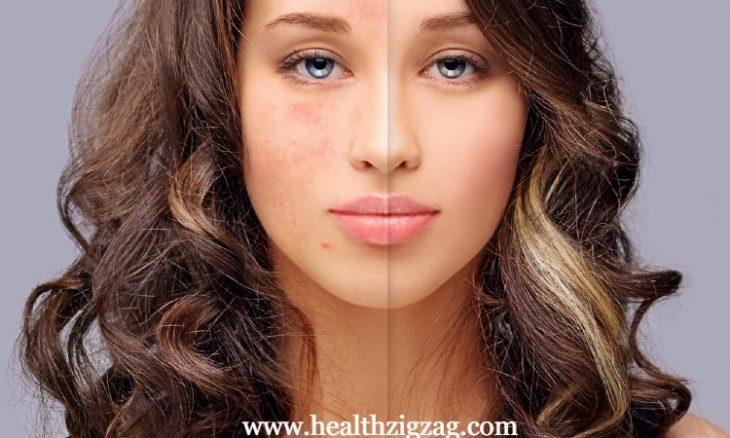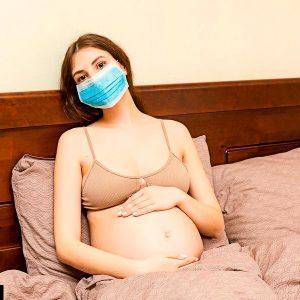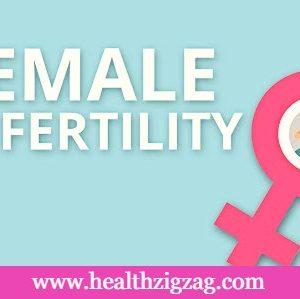
Contents
What is acne?
Acne vulgaris or juvenile acne, popularly known as blackheads and pimples, one of the most common skin diseases in the world. Estimated that up to 85% of adolescents have acne to some degree. Despite being more common in adolescence, up to 10% of people over 50 complain about the presence of blackheads and whiteheads.
Despite causing few complications, severe acne, especially facial acne, can damage young people’s self-esteem and social life. Lack of treatment or inadequate treatment can leave unsightly stains and scars.
If you still don’t know about the skin disorders then just click the link given below to read about them.
Read Also: All About Typical Skin Disorders
How blackheads and pimples arise
Acne vulgaris is a disease of the pilosebaceous follicles.
The pilosebaceous units are found just below the skin surface and are numerous on the face, back and chest. They are composed of a hair follicle. Which is where the hair is born, and a sebaceous gland, responsible for the production of sebum, a fatty substance responsible for skin hydration.
The acne formation process begins when there is an obstruction of the follicle canal, preventing sebum from draining into the skin. This obstruction usually occurs when there is a large production of sebum associated with dead skin cells. The joining of these two forms a kind of stopper or plug called a comedone. When we squeeze a clove, that white substance that comes out with a black tip, it is nothing more than comedo.
During adolescence, the increase in sex hormones stimulates a greater production of sebum by the sebaceous glands. Favoring the formation of blackheads.
Comedones are an excellent culture medium for a bacterium. That usually lives on the surface of our skin, called Propionibacterium acnes [1]. The p.acne invades the follicle and feeds on sebum fats, proliferates up and cause infection of the pilosebaceous unit. As of this moment, we no longer have a blackhead. But rather a spine itself, composed of the comedone and a pouch of pus around it.
Patients with severe acne are those who have sebaceous glands that are hyper-responsive to sex hormones.
What causes acne?
As already mentioned, hormonal changes are responsible for the stimulation of the sebaceous glands and the formation of the comedone. Genetic factors contribute to define those that present a greater or lesser reaction to this hormonal stimulus.
Therefore, it is not surprising that adolescents, pregnant women, hormonal fluctuations due to changes in the contraceptive. Women with polycystic ovaries and users of testosterone or derivatives have a higher risk of developing acne.
Some drugs like corticosteroids are structurally similar to sex hormones. Therefore, they also facilitate the appearance of pimples and blackheads.
Oil-based substances and cosmetics can favor the appearance of acne. Give preference to water-based products, called non-comedogenic products.
Despite being a widespread fact in the lay population, there is no evidence that there is a relationship between acne and food.
Read Also: 12 Best Foods For Healthy Skin
Another famous myth is that acne is caused by poor skin hygiene. Washing your skin with soap and water does reduce oiliness. However, it does not prevent the sebaceous gland from continuing its sebum production. After a few hours of cleaning, the skin is already oily again and rubbing it insistently can even make the lesions worse.
Read Also: Methods: How You Can Treat Your Oily Skin
This in no way means that you should not take baths with soap every day, it should not be expected that only this will solve the pimple problem.
Periods of psychological stress seem to contribute to the worsening of injuries.
In overweight women, menstrual cycle disorders, abnormal hair distribution, and acne, polycystic ovary syndrome should be considered.
Classification
Acne is more common in areas where there is a greater presence of sebaceous glands. Namely on the face, neck, back, chest, shoulders and upper arms.
The severity of acne is graded as follows:
- Grade I – Majority of comedones and occasionally some pustules (pimples).
- Grade II – Comedones and pustules in greater quantity, mainly on the face, with the possibility of scar formation.
- Grade III – Numerous comedones and pustules diffused over the face, shoulders, and trunk. Nodules and cysts may form. The presence of scarring is common.
- Grade IV – Numerous cysts and nodules and the presence of severe scarring.
There is also a more serious and rare form, called acne fulminans. Which presents with fever, bone lesions, kidneys, and sepsis.
Treatment
The treatment of acne depends on the degree of it.

General measures against acne
- Avoid squeezing pimples and blackheads.
- Wash your face daily, preferably with specific acne products. Use special soaps for the face. Avoid using products that help to scrub.
- Avoid sun exposure, especially if you are treating acne with medications.
- Shower after physical exercise.
- Avoid excessive makeup and do not sleep without first removing it.
- Avoid tight or very warm clothing.
Grade I acne – Comedogenic acne
The goal is to decrease the formation of comedones. Treatment can be done with topical retinoids such as Tazarotene, Adapalene or Retinoic acid. Soaps based on salicylic acid and azelaic acid can also be used.
In more resistant cases, manual extraction of comedones by qualified professionals (skin cleaning) may be necessary.
Read Also: 7 Home Remedies To Treat Cracked Facial Skin
Read Also: How To Treat Crepey Skin Naturally?
Moderate acne – grade II
In this case, there is already infection by P. Acnes, requiring drugs with antibacterial activity. The most used regimen includes benzoyl peroxide and an antibiotic, both topical.
Moderate to severe acne – grade III and IV
In addition to topical treatment, oral antibiotics and Isotretinoin (Roaccutane ®) required.
In women, the use of some types of contraceptives can help a lot.
Read Also: Non-invasive beauty treatment to solve skin problem
Effects of Roaccutane®
Roaccutane ® is a powerful drug for the treatment of moderate to severe acne. But there are side effects of this drug.
Isotretinoin decreases the size and sebum secretion of sebaceous glands and decreases the accumulation of skin cells within the canal. In this way, it acts on the factors that contribute to the formation of comedones.
Roaccutane ® contraindicated in pregnancy as it causes severe malformations in the fetus. Therefore, it should be used with caution in women of childbearing age. The ideal is to associate the pill and perform monthly pregnancy tests.
Isotretinoin can also cause skin damage, especially if there is sun exposure. As sebum production decreases, it can develop with dry skin.
Other complications include Joint pain, reduced night vision, medicated hepatitis, bone marrow suppression, and increased triglycerides.
The famous relationship between Roaccutane ® and depression/suicides established in the 80s and 90s has been challenged by the latest works. This hypothesis currently accepted, but this relationship is not as certain as it was thought.
Read Also: Skin Cancer: Causes, Symptoms, Types, and Treatment




